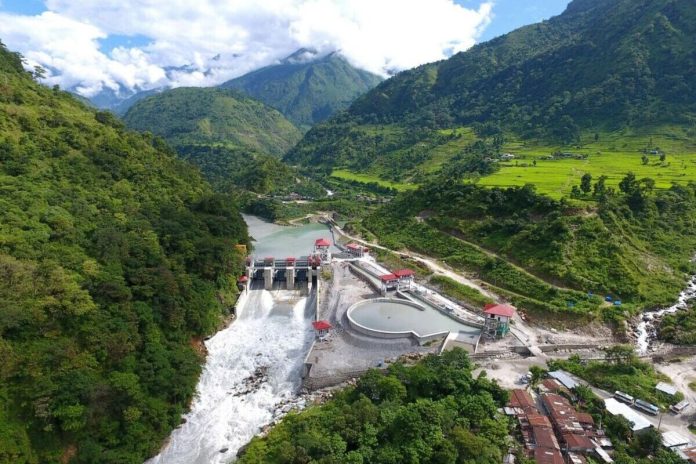India is making a significant stride towards bolstering its clean energy capabilities by proposing the establishment of 13 hydroelectric projects in Arunachal Pradesh, with the aim of contributing 13,000 megawatts (MW) to the national grid.
Union Power Minister R K Singh, following his visit to the Subansiri Lower Hydroelectric Project (SLHEP), revealed that these ventures would require an investment of Rs 1.4 lakh crore, anticipating a substantial elevation in the per capita income of the region.
SLHEP is the biggest hydroelectric project undertaken in India so far and is a ‘run of river’ scheme with a small pondage on river Subansiri.
A run-of-river dam is one in which the flow of water in the river downstream of the dam is the same as the flow of water upstream of the dam.
The estimated annual energy generation from the project is 7421.59 MU in a 90 per cent dependable year. The installed capacity of the project is 2,000 Million Watts (MW).
After scrutinising the construction progress at the dam site situated on the Assam-Arunachal Pradesh border, Singh issued directives to officials and contractors to ensure the timely completion of the project, as per the Economic Times report.
Emphasising the growing significance of hydel projects for India, particularly in ensuring a steady supply of renewable energy, he stated, “Hydropower is crucial for our transition to renewable energy sources.”
Singh highlighted that India’s current hydroelectric capacity is 47,000 MW, representing only 35 per cent of its total potential. He underscored the contrast with developed nations, where up to 80 per cent of their hydro potential has been harnessed, illustrating the substantial growth opportunity within India’s sector.
The minister reported a 20 per cent surge in the nation’s power demand in the latter part of 2023, a trend expected to persist with economic growth. Anticipating a doubling of power demand by 2030, Singh stressed the imperative for continued development in the energy sector.
Singh also provided insights into India’s strides in energy transition, highlighting the country’s achievement of its Paris COP21 commitment to non-fossil fuel capacity nearly a decade ahead of schedule.
Despite India’s comparatively low per capita carbon emissions compared to developed nations, he affirmed the country’s prerogative to use fossil fuels for growth if deemed necessary.


